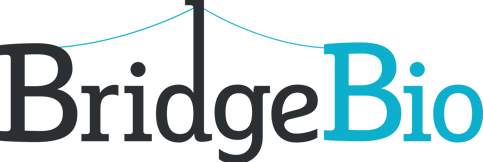Financial Engineering & The Andrew Lo Model
A study examining Andrew Lo's Risk Diversification approach to investment theory in biotechnology companies.
FINANCETECHNOLOGY
Who is Andrew Lo?
Andrew Lo is a professor at the MIT Financial Engineering lab. He designs High Frequency Trading algorithms that companies on Wall Street use.
Several of his students are famous fund managers. He built the Adaptive Market Hypothesis which basically attempts to overlay behavioral economics on the original efficient market hypothesis, which basically states that free markets will always revert to a state of efficiency.
On a personal front, MIT Professor Andrew Lo lost 6 people to cancer in 4 years.
He found that research into drugs that could save the lives of cancer patients was extremely underfunded.
The model of financing medical research in the BioTech and BioPharma space encountered several barriers, regulatory and financial in nature.
Basically, in the BioTech industry there is a 'Valley of Death'.
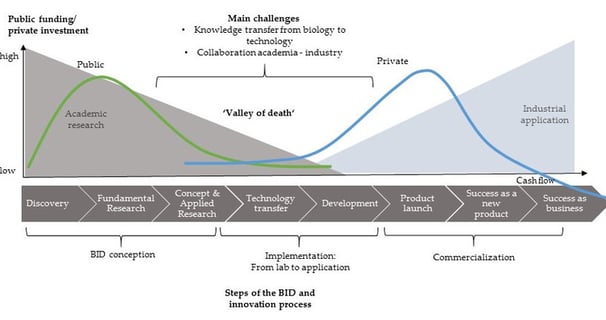

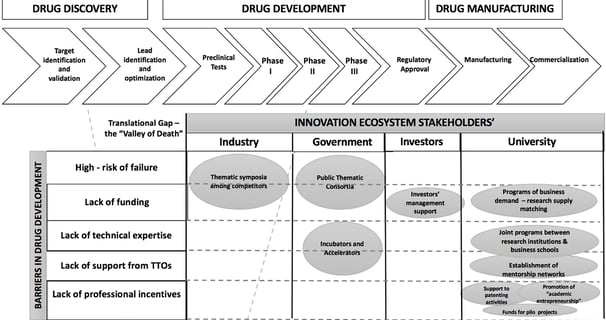

Drug discovery is an expensive process.
It might cost USD 200 Million to develop a new drug, which could only have a 5% chance of success.
Even if you define success as USD 2 Billion a year for 10 years, the risk is outrageous.
Primarily because the capital is concentrated into one project and the timespam/horizon of the process is over 5-10 years.
What were his conclusions?
Professor Lo found that the Private Equity and Venture Capital model was too traditional for an industry such as BioTech.
These channels provided capital but with conditions, and often the low chances of success deters any investors from taking any action at all.
This process often means that several drug projects never get funded at all and never get off the ground.
What is the Andrew Model?
The process of de-risking investing into BioTech was conventional.
Investors have traditionally protected their invest by diversifying investments into multiple asset classes.
Similarly, Andrew Lo proposed a diversification model for investing into BioTech startups.
Algorithms are Art.
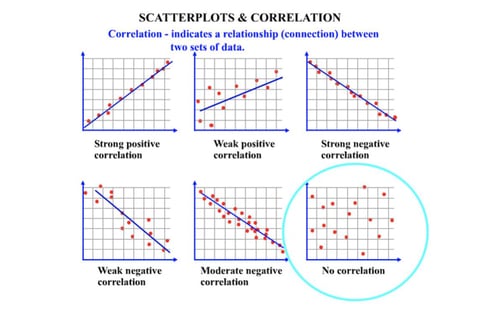

Basically what the above chart shows is the relationships between the returns of companies working in the same sector, versus companies operating in different sectors.
As you can see, correlated companies will often have a key area where success or failure establishes a trend line for the rest of the companies.
Uncorrelated companies, working in different sectors also have different returns.
Mathematics;
Professor Lo established that in an uncorrelated portfolio of 150 biotech startups, the success rate of finding 1 superstar company is 99.9% while the success rate of finding 5 superstar companies was 87.4%.
Basically, by investing in 150 startups at once - the chance of finding 1 company that can generate USD 2 Billion a year, for 10 years in 99.9% [!!!!!!!!!!!!!!!]
If you find 5 companies that generate that much revenue, the success rate is 87.4%
These odds are extremely low-risk, even for the most conservative investors.
This model created an avenue to fund rare drug research.
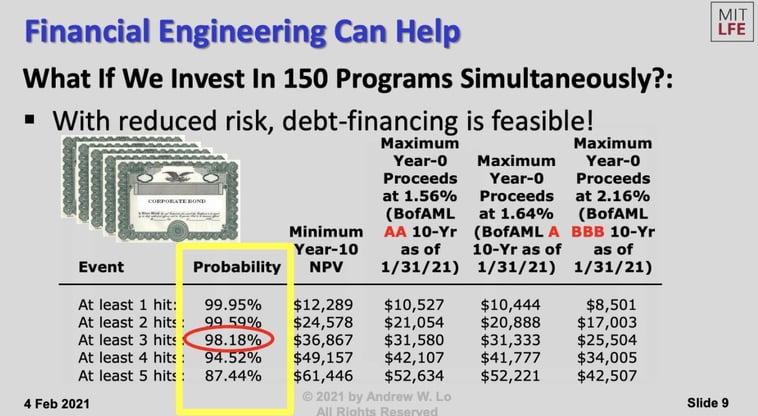

What Happened Next?
Since a professor is only as good as his weakest student; Neil Kumar [he is Indian, incase you couldn't tell] started a company called BridgeBio Pharma [Stock: $BBIO]
Neil sir decided that this company would bring the Andrew Model to life.
He targeted unique diseases to ensure they were not related to one another.
'Orphan Diseases', which are diseases with single-gene defects and Cancers, which have different genetic drivers.
Basically, the cause of the diseases for each and every company is completely and totally different.
For example, even a type of cancer like 'skin cancer' can have multiple different genetic causes and such.
Neil Kumar investigated the pipeline of companies to make sure that they were all operating in different verticals of the BioTech industry.
Neil sir centralized the model a bit, conducting the Research and Diligence of a drug in-house and then spinning-off successful projects into their own subsidiaries.
What is the situation now?
BridgeBio Pharma is worth USD 8 Billion. 😐
The company currently has in it's pipeline 20 rare disease projects, with 4 projects in Phase-3 [human] trials.
It recently received it's first FDA Approval for a drug.
The castoff is called Alexion and it stops babies from having problems feeding, it stops them from having seizures and it stops mummys and papas from crying helplessly while their babies cry too.
If the company gets another 4 approvals in 2022, it will be one of the sophisticated financial models ever deployed to return a triple digit profit.


